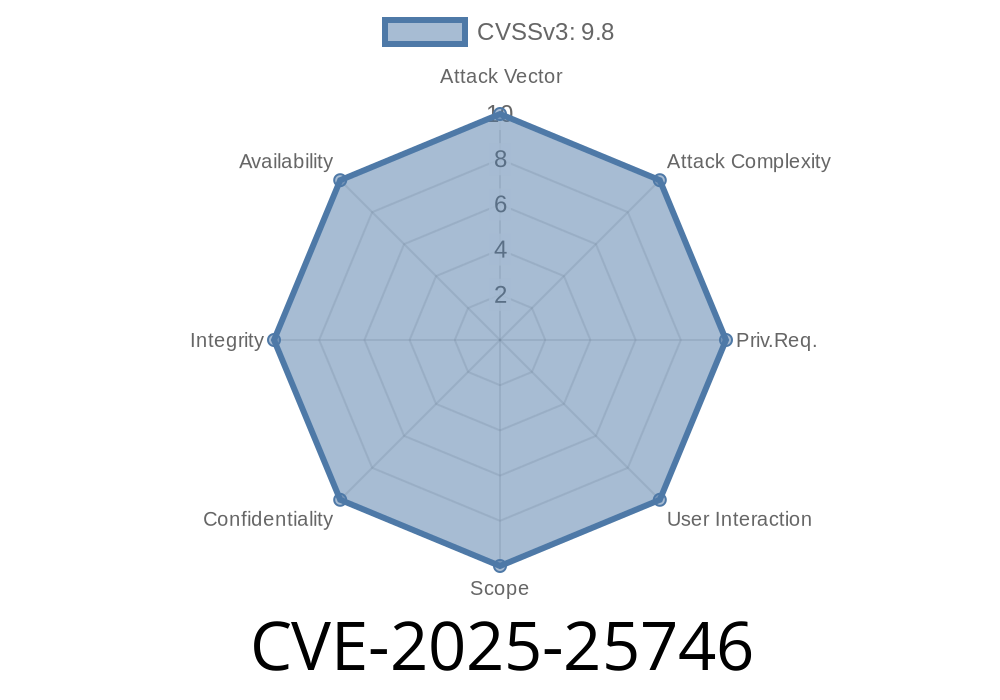In this in-depth analysis, we will dive into the nuts and bolts of the CVE-2025-25746 vulnerability: a stack-based buffer overflow that exists in D-Link DIR-853 A1 FW1.20B07. This vulnerability can be exploited through the Password parameter in the SetWanSettings module, allowing an attacker to execute malicious code on the affected device. We'll take a closer look at the exploit details, investigate the vulnerable code, and discuss ways to mitigate this security risk.
Please note that the information in this article is meant for educational purposes only. Don't use the details here to execute unauthorized attacks on vulnerable systems. Always exercise responsible disclosure and follow ethical guidelines!
Original References
1. Vulnerability information source: The United States National Vulnerability Database (NVD)
2. Vulnerability announcement: D-Link Security Advisory
Exploit Details
The stack-based buffer overflow occurs when a user supplied input - in this case, the Password parameter - is not properly sanitized before being processed in the SetWanSettings module. This overflow allows an attacker to corrupt the stack memory and execute arbitrary code on the device.
Send the request to the targeted device's SetWanSettings module.
3. The stack memory is corrupted due to the buffer overflow, allowing the attacker to gain control of the execution flow.
Vulnerable Code Snippet
The following (pseudo) code snippet illustrates the vulnerable part of the code in the D-Link DIR-853 A1 FW1.20B07 firmware:
char buf[256]; // fixed-size buffer
void process_request(char *input_password) {
strcpy(buf, input_password); // vulnerable call, does not check input length
set_wan_settings(buf);
}
As you can see, the process_request function copies the input password directly into the fixed-size buffer buf using the strcpy function without checking if the input length exceeds the buffer size. This oversight creates the buffer overflow vulnerability and allows an attacker to overwrite the adjacent stack memory.
To protect your D-Link DIR-853 A1 FW1.20B07 device from this vulnerability, follow these steps
1. Install the latest firmware update provided by D-Link as soon as possible to patch the vulnerability. Firmware updates can be found on the D-Link support website.
Regularly update your router's firmware to the latest version to minimize security risks.
3. Disable remote management on your device, which can minimize the attack surface by only allowing device management from your local network.
4. Change the default password for your router's administrator account to a unique, strong password to reduce unauthorized access risk.
Conclusion
The CVE-2025-25746 vulnerability illustrates the importance of proper input validation and secure coding practices in embedded systems like routers. By taking the time to understand such vulnerabilities and implementing secure coding best practices, developers can reduce the risk of introducing similar security flaws in the future.
Additionally, as users, we must keep our devices updated with the latest firmware and follow security best practices to safeguard our networks from potential attacks and exploitation.
Timeline
Published on: 02/12/2025 17:15:24 UTC
Last modified on: 02/24/2025 16:30:37 UTC
